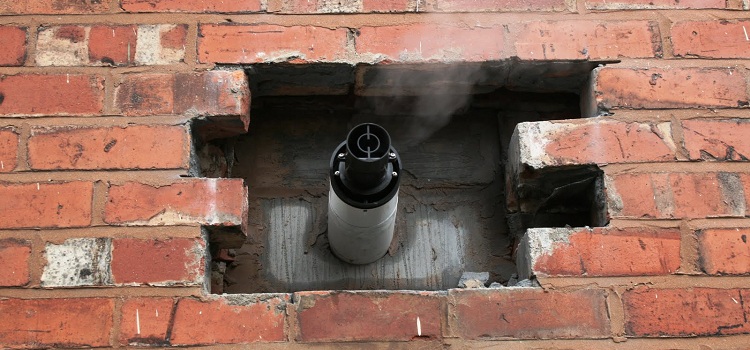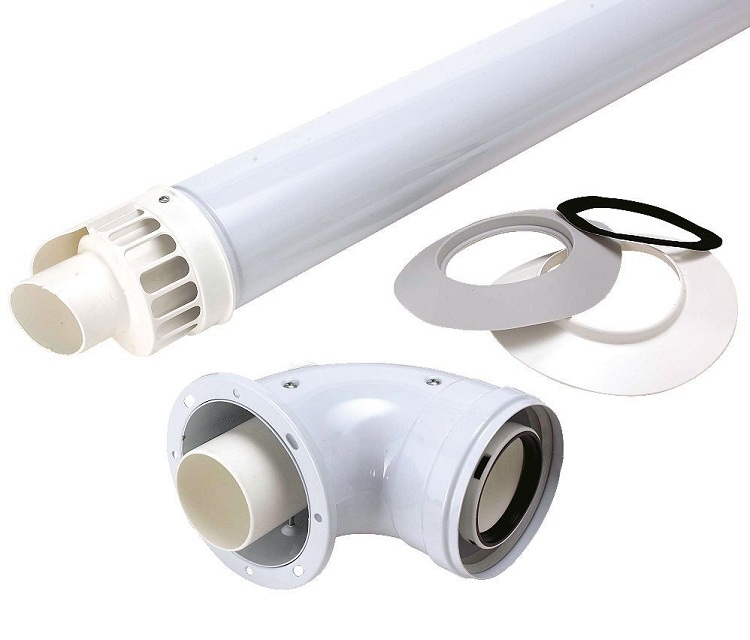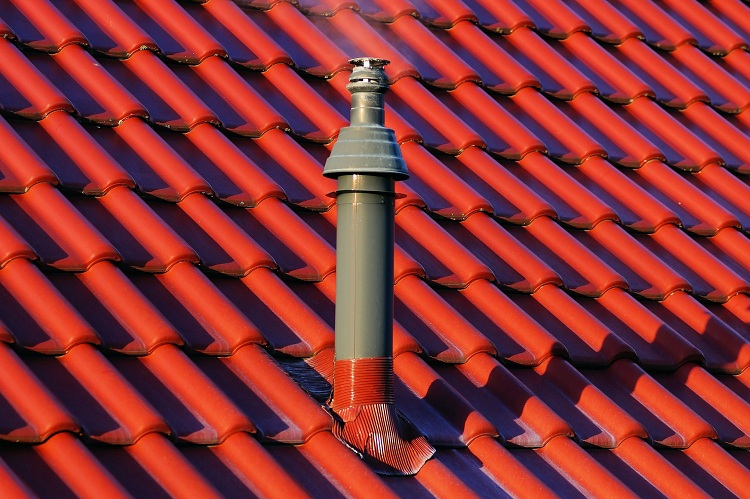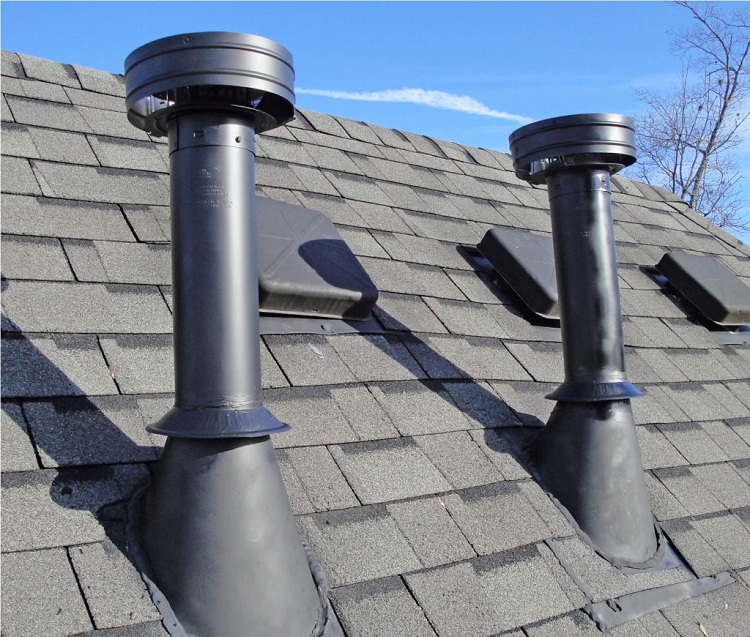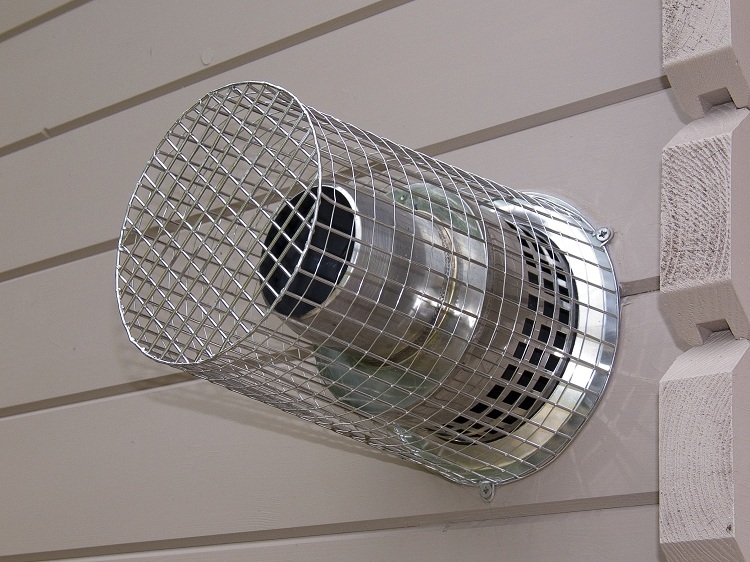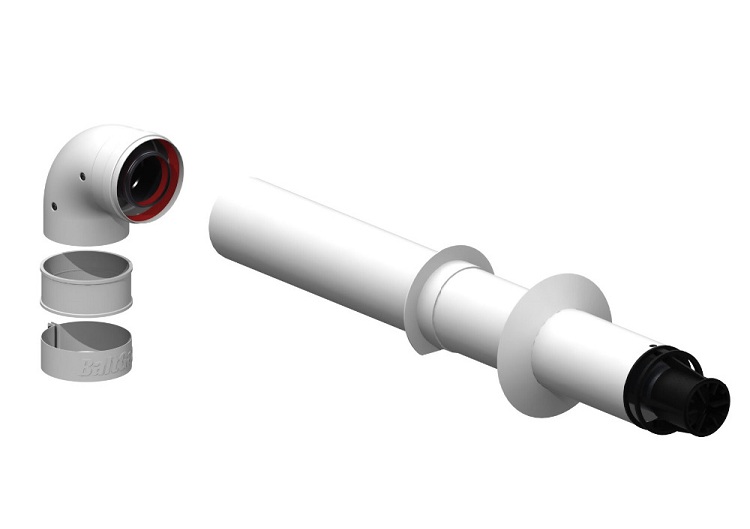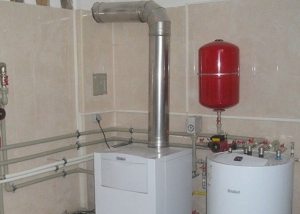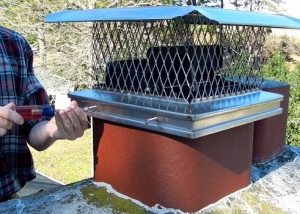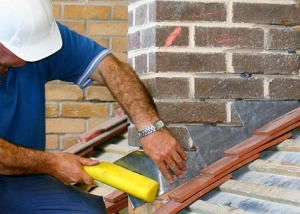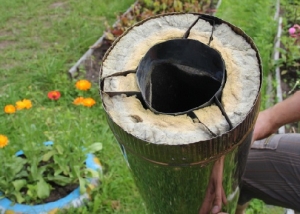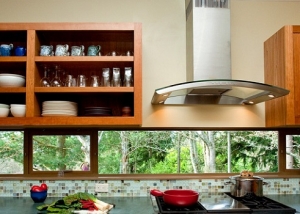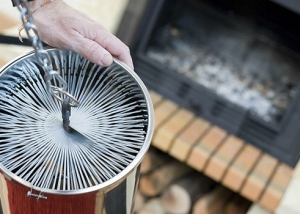Installation of a gas boiler is a serious event that requires certain knowledge and skills. In addition to installing heating equipment, a very important point is the calculation of the diameter of the chimney pipe for a gas boiler. Properly selected dimensions of the chimney design provide a high-quality removal of combustion products outside the house.
Content
- 1 Which chimney is better for a gas boiler?
- 2 Types of gas boilers
- 3 Calculation of the cross section of the chimney for a gas boiler
- 4 Other requirements for calculating the chimney
- 5 Chimneys of open gas boilers. What materials are used?
- 6 Determination of the cross section of the chimney for a gas boiler of open type
- 7 Tips for properly laying the chimney for a closed boiler
Which chimney is better for a gas boiler?
Pipes for the removal of combustion products of gas boilers can be made of various materials. Installation of heating communications and the chimney requires compliance with building codes, as improper installation of these structures can lead to an emergency. It should be said right away that the temperature indicators of the products of combustion of such systems, as a rule, do not exceed the mark of 150 ° C.
However, even in this case, the choice of material for flue gas communication must be approached with all seriousness, since the products of gas combustion contain sulfuric acid. Sulfuric acid is an aggressive chemical compound that corrodes the walls of smoke ducts from various materials, whether it is brick or stainless steel.
Advice! For the removal of combustion products of gas boilers, experts recommend choosing structural elements for chimneys, which are made of acid-resistant steel grade (AISI 316L).
You should pay attention to another important factor - the dew point. The dew point is the limit of condensation in the chimney, stopping the combustion process in the heater. Such a point occurs if there is a difference between the temperatures inside and outside the flue duct. This leads to the formation of a water plug, which prevents the removal of the combustion products of the gas boiler. Brick constructions are most susceptible to this problem, since they have rough inner walls that contribute to the accumulation of condensate.
In stainless steel ducts, a water plug is unlikely to occur. The same goes for ceramic and asbestos-cement pipes for chimneys. However, when heated, asbestos-cement pipes emit substances harmful to human health - carcinogens. The best option for the removal of the combustion products of heaters that process gas is considered a sandwich pipe. Such products consist of two pipes and a layer of heat insulator between them.
Types of gas boilers
Not only the appearance of the heating structure, but also its operational characteristics and features depends on the type of boiler. Today, there are two main types of gas heaters. Consider them:
With an open burner. Such equipment, as a rule, is mounted on the floor and has a rather large power, which is above 30 kW.The main difference between this equipment and the second type of gas boilers is that oxygen is used to burn gas, which is located in the room where the boiler is installed. An open type of burner requires good ventilation of the room for normal operation. Therefore, when purchasing a boiler of this type, it is recommended to take care of ventilation.
Insufficient ventilation of the working room will lead to the release of carbon dioxide in the combustion process, which threatens the lives of residents. For the removal of the combustion products of such a boiler, it is desirable to use a classic vertical flue duct. Such a vertical channel must necessarily be displayed on the roof of the house in which the boiler room is located.
With a closed burner. This type of burner is installed on heating equipment, characterized by low power (up to 35 kW). In such boilers, fuel combustion occurs in a special sealed chamber. In this case, the gas outlet is possible only through the opening of the coaxial smoke channel. Coaxial chimney channel is a modern technology based on the specific design of pipes. One of the pipes of such a chimney is located in the second pipe and has a smaller cross section, but a greater length than the second. The gas combustion products move along the pipe with a lower internal cross section, and clean air enters the heater through the second pipe.
Such a heating structure operates due to special pumps, therefore it is volatile. Unlike vertical communication with a closed burner, such a system must be mounted in a horizontal plane.
Calculation of the cross section of the chimney for a gas boiler
First of all, you need to pay attention to one of the main indicators, on which the working capacity and efficiency of the chimney channel depends. This indicator is the diameter of the chimney for a gas boiler. The calculation of the required indicator of the channel cross-section in this case is carried out according to the rule, which indicates that 1 kW of the heater power is not less than 5.5 cm².
Important! For one residential building, it is allowed to install no more than two boilers located on different or on the same tiers.
The gas combustion products of two heaters operating on gas and located on different tiers of the building must enter the chimney at a distance of 50 cm (in height) from each other. This rule also applies to two heating appliances located on the same floor of the building.
Building codes and regulations do not prohibit the discharge of combustion products from two gas-fired heating appliances into one chimney. However, in this situation, the indicator of the cross section of the chimney is calculated by the total power of the units.
Other requirements for calculating the chimney
Consider other requirements that must be observed when calculating the chimney duct for a gas heating device
- flue gas communication for a gas-fired apparatus must end with a vertically arranged pipe. This is a necessary rule for the normal removal of combustion products;
- in such communication a certain slope is allowed (up to 30 °). The deviation of the chimney communication to the sides should be no more than 1 m;
- in no case should the cross-sectional index of sections located at an angle be less than the same parameter for vertical pipes;
- the channel cross-section should not be less than or exceed the similar parameter of the exhaust pipe of a heating device;
- a chimney segment located in a horizontal plane should have a bias towards the boiler (2 cm per 1 m of the channel length);
- horizontally located segments of the chimney canal must be equipped with inspection windows (revisions);
- at the lower point of the vertical communication, a connecting element must be installed - a tee, equipped with an opening for condensate removal;
- round chimneys have minimal resistance and carry out the highest quality removal of combustion products of gas heating equipment;
- the presence of chimney joints at the level of floor floors is strictly prohibited;
- at the turning points of the system, as in the case with horizontal sections, it is necessary to install inspection hatches.
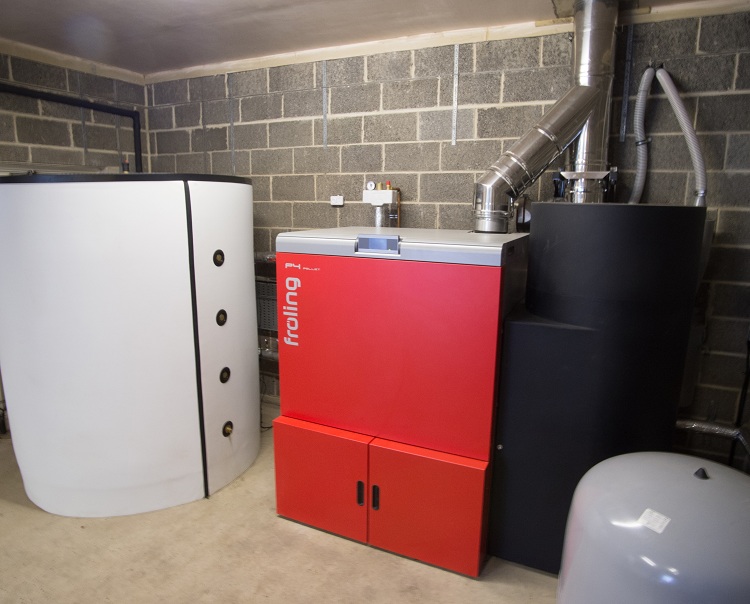
For a chimney, the absence of a large number of bends and turns is important, there should be no more than three elbows
Note! The maximum number of connecting elbows for chimney communication is three.
Guided by the above rules, you can perform a quality installation of the chimney design for a gas heating unit.
Chimneys of open gas boilers. What materials are used?
For the installation of open gas boilers, various materials are used. In order to select the appropriate material for the chimney, which will exhaust the combustion products of the gas boiler, it is necessary to familiarize themselves with their properties. Consider these materials:
- Brick. Brick chimneys are a real classic, however, for laying the flue duct of a gas boiler, brickwork is the least profitable solution. This is due to the fact that the inner walls of such a channel are distinguished by their roughness and are able to accumulate condensate, which becomes the cause of corrosion of the chimney. There is one more minus - brick smoke exhaust channels have insufficient tightness and are able to pass gas combustion products. In the case of using brickwork, it is recommended to insulate the internal channel of the chimney with steel or aluminum sheets.
- Steel. Steel sheets for the interior decoration of a chimney duct or pipe made of this material are a very reliable solution. This is due to the fact that steel of certain grades (316, 310S, 304, 316L) has good heat resistance and resistance to corrosion.
- Aluminum. This material is often used to finish the interior surface of a flue gas duct constructed of brick.
- Enameled pipes. Such products can be made immediately with a heat-insulating layer using sandwich technology. From such enameled segments, it is possible to mount a smoke outlet channel without any special effort, which will not need additional thermal insulation.
Determination of the cross section of the chimney for a gas boiler of open type
Before proceeding with the installation of the chimney communication for an open-type gas boiler, it is recommended to draw up a plan of future work. The determination of the cross-sectional index of a rectangular chimney is somewhat different than in the case of round structures. Consider calculating the correct cross section for both options:
- for rectangular communication, the pipe section is defined as follows: 1 kW of power must correspond to 5.5 cm²;
- the cross-sectional index of the round chimney must not be less than the diameter of the outlet pipe of the gas heating unit.
Important! When withdrawing a chimney pipe to a gable roof, it must be remembered that the chimney should be higher than the highest roof element by 0.5 m. And if the roof is flat, the channel should rise above its surface by at least 2 m.
Chimney communication, which is located vertically, must necessarily have a heat-insulating layer. For these purposes, fireproof insulators are used. Consider examples of fireproof heat-insulating materials that are perfect for this purpose:
- asbestos cement;
- brick;
- mortar from lime and slag.
In addition to the mandatory arrangement of thermal insulation, it is necessary to take care of the tightness of the structure. This is necessary in order to prevent the penetration of combustion products into residential premises.
Tips for properly laying the chimney for a closed boiler
For a closed gas-fired heater, as mentioned above, special coaxial flues are used. The calculation of the cross-sectional index of the coaxial chimney is reduced to one important rule: the cross-section of the channel should not be less than the same indicator of the boiler outlet pipe.
In addition, there are other norms, as well as provisions that must be followed for the normal installation of the coaxial type smoke outlet. Consider other rules for installing a coaxial smoke outlet:
- First of all, it is necessary to remember that the coaxial structure must be mounted strictly in the horizontal plane. Vertical installation in this case is strictly prohibited;
- the distance from the coaxial chimney pipe to the ground should be no less than 2 m. The chimney located below will not function properly;
- the minimum distance from windows, doors and openings that relate to ventilation communication should be 50 cm;
- the vertical distance from the windows that are located above should not be less than 1 m;
- in addition, it is important to remember that at a distance of one and a half meters from the coaxial smoke exhaust channel, there should be no barriers. In this case, obstacles may include: poles, fences, walls, etc .;
- it is strongly not recommended to mount smoke exhaust ducts in arches, tunnels and in passages that are located underground;
- Do not forget about the necessary tilt of the coaxial pipe. Such a slope ensures the removal of condensate from the structure and, as a rule, ranges from 6 to 12 degrees.
Proper installation of the chimney of a gas boiler is the key to a long and safe operation of this equipment. The size of the chimney for any gas boiler is the main characteristic, which includes a number of parameters determined by fairly simple methods. However, for reliability, it is still recommended to turn to specialists who are able to perform these calculations, select materials and assemble a high-quality system from them.
